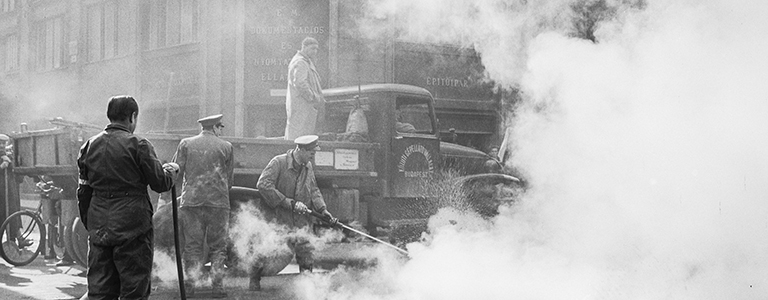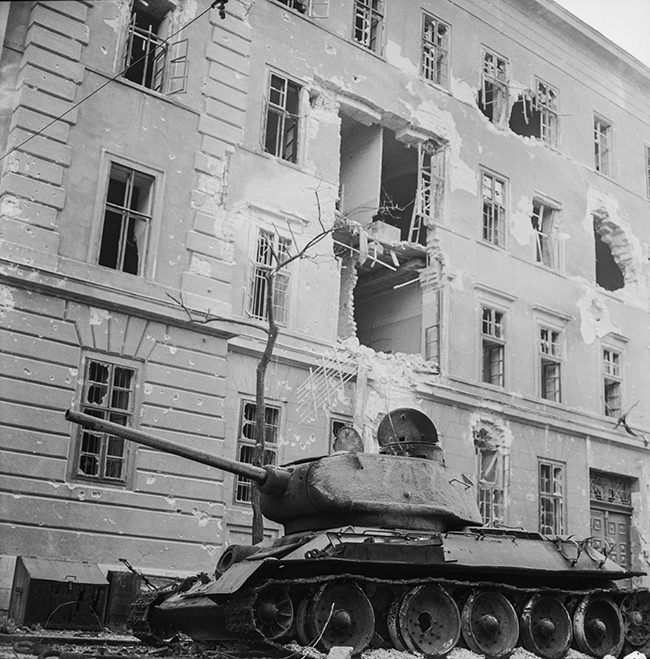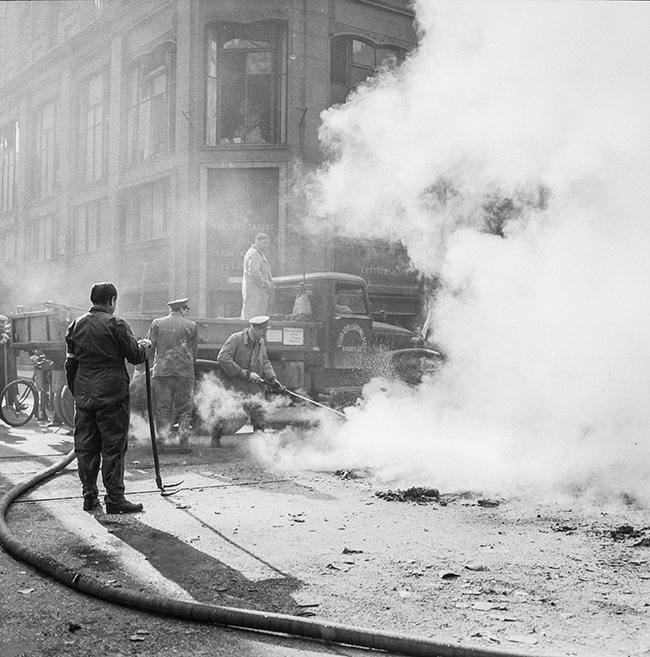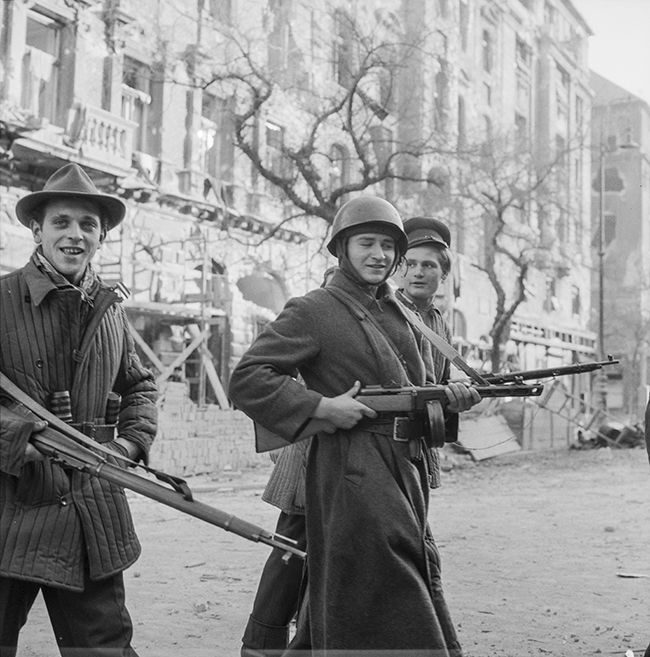In the autumn of 60 years ago, from 23 October to 4 November 1956, dramatic events took place in Budapest, known as the Hungarian Uprising or Hungarian Revolution. In this struggle for freedom, the Hungarian population turned against the government of the Communist Party and the Soviet occupying power.
Jack Metzger: Hungarian Uprising, Budapest, Üllői út, 1956 (Com_M05-0448-0009)
Jack Metzger: Hungarian Uprising, Budapest, Kossuth Lajos utca – Magyar utca, 1956 (Com_M05-0448-0003)
Jack Metzger: Hungarian Uprising, Budapest, young revolutionaries on József körút, 1956 (Com_M05-0448-0001)
After the Second World War, the Hungarian Revolution was the greatest challenge of the Soviet hegemonial power in Eastern Europe and at the same time a widely visible symbol of the bankruptcy of Soviet socialism. It was an internationally recognized event that has shaped a deeply positive world view of Hungary to this day. It was a “victorious defeat”, an authentic “anti-totalitarian” revolution – and perhaps above all a “fantastic story” (Lendvai, p. 10).
Following the violent suppression of the revolution by the Soviets, over 200,000 Hungarians fled abroad, 14,000 of them to Switzerland. The arrival and care of the Hungarian refugees was well documented by the photo agency Comet. However, it is rather unusual that the agency, which usually focuses on the Zurich-Eastern Switzerland region, sent a photographer to Budapest and thus to the centre of the war. Jack Metzger’s pictures were published promptly in the Schweizer Illustrierte Zeitung.
Reference:
Lendvai, Paul: Der Ungarnaufstand 1956: Die Revolution und ihre Folgen (München, 2006).



